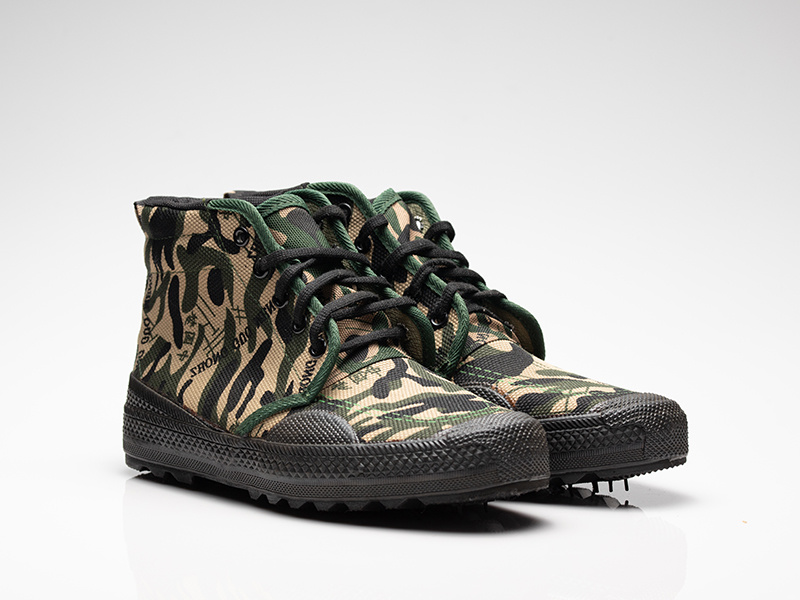A joint-stock enterprise specializing in the production and sales of cloth faced rubber shoes
All classifications
Essential Guide to Choosing Anti-Slip Work Shoes for Safety and Comfort
Classification :
Published time :
2025-03-05
When it comes to working in environments where slip hazards are prevalent—such as kitchens, construction sites, or factories—choosing the right footwear is critical. Anti-slip work shoes are designed specifically to provide traction and stability on slippery surfaces, minimizing the risk of falls and injuries. Understanding the features and benefits of these shoes can help you make an informed decision when selecting the ideal pair for your workplace.
One of the primary characteristics of anti-slip work shoes is their specially designed outsoles. These outsoles often incorporate advanced rubber compounds with tread patterns that enhance grip on wet or oily floors. When shopping for anti-slip shoes, seek out those with deep, multidirectional lugs, as these can significantly improve traction. Additionally, many anti-slip shoes are tested and certified to meet specific slip-resistance standards, giving you peace of mind about their performance.
Comfort is another crucial factor to consider. Many anti-slip work shoes come with cushioned insoles and ergonomic designs that support prolonged wear, which is particularly important for individuals spending long hours on their feet. Look for shoes with breathable materials to keep your feet cool and dry throughout the day. A good fit is also essential; shoes that are too tight or too loose can lead to discomfort and fatigue.
In addition to safety and comfort, style and durability should not be overlooked. Today's anti-slip work shoes come in a variety of styles—from athletic-inspired designs to more traditional work boots—allowing you to choose a look that suits your personal taste and workplace environment. Furthermore, selecting shoes made from high-quality materials can ensure longevity, allowing you to protect your investment over time.
Maintenance is also an important consideration. Regularly cleaning your anti-slip shoes can help maintain their effectiveness. Remove dirt and debris from the outsoles to preserve traction, and replace shoes when they show significant wear.
Finally, while anti-slip work shoes are essential for safety, they should be part of a broader workplace safety strategy. Always be aware of your surroundings and follow safety protocols to prevent accidents.
In summary, choosing the right anti-slip work shoes involves considering various factors, including traction, comfort, style, and maintenance. By investing in a quality pair, you can enhance your safety and comfort in any work environment, helping to prevent slips, trips, and falls.
One of the primary characteristics of anti-slip work shoes is their specially designed outsoles. These outsoles often incorporate advanced rubber compounds with tread patterns that enhance grip on wet or oily floors. When shopping for anti-slip shoes, seek out those with deep, multidirectional lugs, as these can significantly improve traction. Additionally, many anti-slip shoes are tested and certified to meet specific slip-resistance standards, giving you peace of mind about their performance.
Comfort is another crucial factor to consider. Many anti-slip work shoes come with cushioned insoles and ergonomic designs that support prolonged wear, which is particularly important for individuals spending long hours on their feet. Look for shoes with breathable materials to keep your feet cool and dry throughout the day. A good fit is also essential; shoes that are too tight or too loose can lead to discomfort and fatigue.
In addition to safety and comfort, style and durability should not be overlooked. Today's anti-slip work shoes come in a variety of styles—from athletic-inspired designs to more traditional work boots—allowing you to choose a look that suits your personal taste and workplace environment. Furthermore, selecting shoes made from high-quality materials can ensure longevity, allowing you to protect your investment over time.
Maintenance is also an important consideration. Regularly cleaning your anti-slip shoes can help maintain their effectiveness. Remove dirt and debris from the outsoles to preserve traction, and replace shoes when they show significant wear.
Finally, while anti-slip work shoes are essential for safety, they should be part of a broader workplace safety strategy. Always be aware of your surroundings and follow safety protocols to prevent accidents.
In summary, choosing the right anti-slip work shoes involves considering various factors, including traction, comfort, style, and maintenance. By investing in a quality pair, you can enhance your safety and comfort in any work environment, helping to prevent slips, trips, and falls.
Related news







